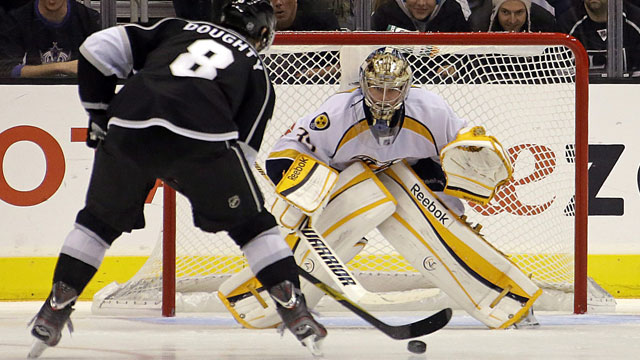CHICAGO — Mathieu Schneider is well aware that the two penalty killing units about to collide in this Stanley Cup final have allowed a combined 10 power play goals in 110 chances. That’s three allowed by Chicago, seven by Boston.
It is a combined success rate of 90.9 per cent that would have ranked No. 1 in the NHL’s regular season, nearly 3 per cent better than second place. Meanwhile the Blackhawks’ 94.8 per cent could in fact best the 2000 New Jersey Devils 92.5 per cent as the stiffest playoff PK in the past quarter century.
Schneider blocked his share of shots as a 21-season NHL defenceman. The problem is, “his share” and “today’s share” aren’t even in the same universe.
“This is something that we’ve really neglected to look at,” Schneider, special assistant to the executive director for the NHLPA, said of the shot-blocking trend that has captivated today’s NHL. “Maybe six years ago, Bob Gainey suggested that we need to stop allowing players to leave their feet to block shots. Everyone looked at him like he had three heads.”
As these two Original Six clubs meet to contend in what should be a dandy Stanley Cup final, a popular vignette will be of Gregory Campbell’s heroic PK work versus Pittsburgh, limping around the defensive zone after blocking an Evgeni Malkin shot during a penalty kill. He would leave the ice and now his season is over; his right fibula was broken on that shot block.
Campbell truly embodies everything we love about our hockey players. But does it also exemplify an area of the game that needs changing?
“Go back 10, 11 years,” Schneider said. “It was discouraged to go down on one knee to block a shot. I’m watching guys dive head first in front of shots now.
“Look at the (New York) Rangers lineup. You’ve got five guys making kick saves. They’ve got extra equipment on their skates, on their gloves … Essentially, what we’ve done is given guys equipment so they can safely block shots with any area of their body.”
Compared to the 2012 playoffs, thus far in 2013 power-play efficiency has dropped (17.4 per cent to 16.6 per cent). Goals per game scoring is up a fraction (2.42 to 2.50), but can anyone remember so many scoreless periods of playoff hockey, or low-scoring 2-1 and 1-0 games?
Schneider is piecing together a brand new sub-committee on equipment — the equipment review sub-committee will report to the competition committee and player health and safety committee — though he readily admits that there has been more study than action through the years.
“I have had friends who have dropped off of committees because of their frustration in a lack of things getting done. I know I’m committed to making change here, (but) it has its challenges.”
The skeptic in us says that Schneider’s attention on the equipment worn by skaters merely lessens the focus on an unsuccessful attempt to rein in the size of bloated goaltending equipment. That movement will be celebrating its 20th birthday someday soon.
But perhaps the same equipment evolution that has allowed for shot blocking to become so in vogue should deconstruct the mostly bogus argument that goalies have leaned on for most of two decades: That they require their Michelin Man gear for protection.
If Duncan Keith or Zdeno Chara can block the shots they do without getting hurt, can Corey Crawford or Tuukka Rask really look us in the eye and say that safety is an issue with the downsizing of goalie gear?
When that theory is put to Schneider, in a generic sense without naming names, he admits, “I think that’s a very fair comment.”
“We can develop all these materials that are bulletproof, and yet we say we need these huge chest protectors? And shoulder pads that go up underneath the cross bar?” he said. “I think we have a lot of people in the right mindset that we can get this thing done. I think it’s not just media and fans that have said enough is enough. It’s a lot of players and former players now.”
Former NHL goalie Glenn Healy is on board.
“You’re talking to a guy who couldn’t get through the gate at the Montreal Forum, because his pads were too big, OK?” he laughs. “Maybe the formula, with regards to how big the pads can be … can now be re-tweaked, and re-jigged.
“Let’s come up with a better mouse trap.”
As you watch this Stanley Cup final, and marvel at the courage of players who throw themselves in front of 100-m.p.h. slap shots at every opportunity, think about what might happen if a third of those shots got through to the net.
Through to a goalie whose five-hole did not close automatically, due to pads that stretch four inches taller than need be. Whose shoulders did not grow three inches with each shrug — with arms that were not twice as wide in equipment and a tent/sweater as they would be with a t-shirt on.
Who wasn’t wearing clown pants.
Chances are we wouldn’t be challenging a penalty-kill mark set by the 2000 New Jersey Devils.
Any time you’re approaching defensive levels of that team, you’ve got a problem.


